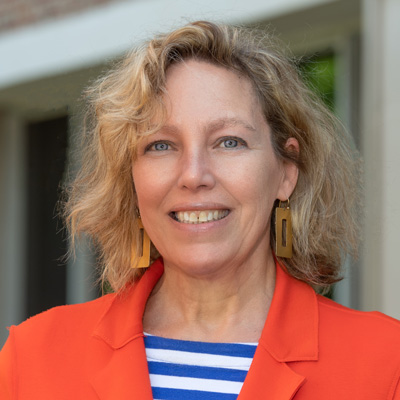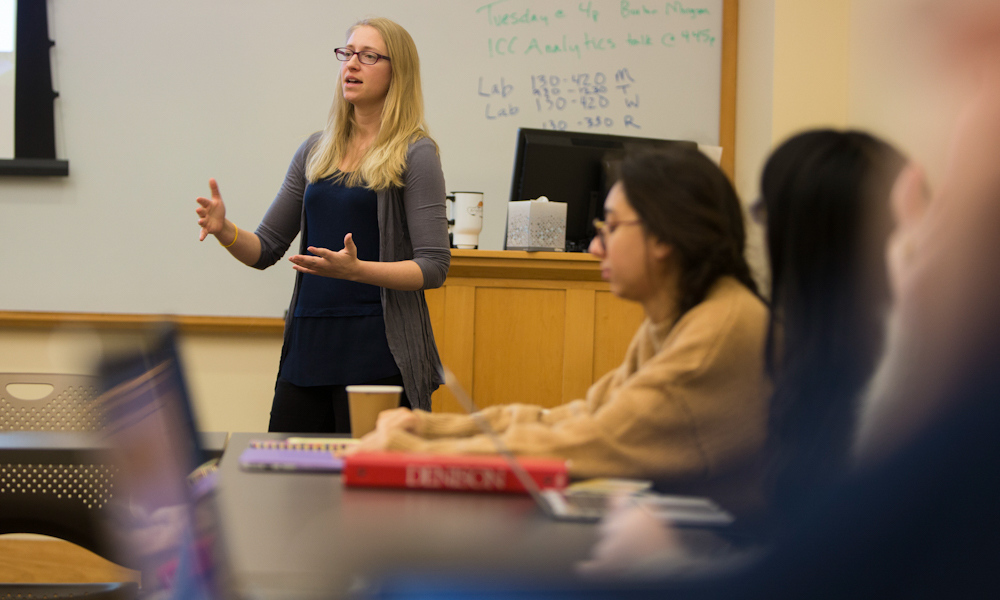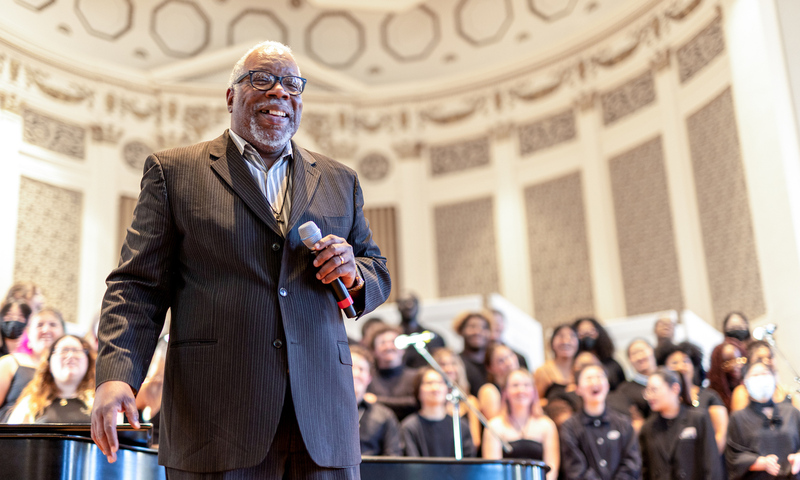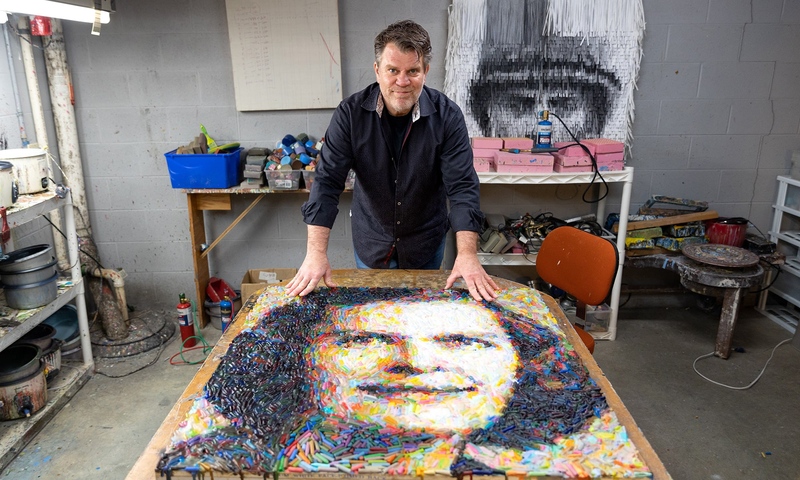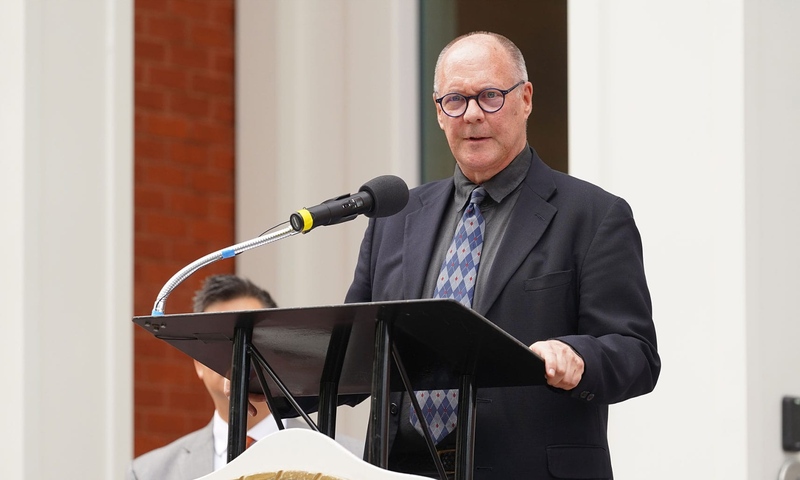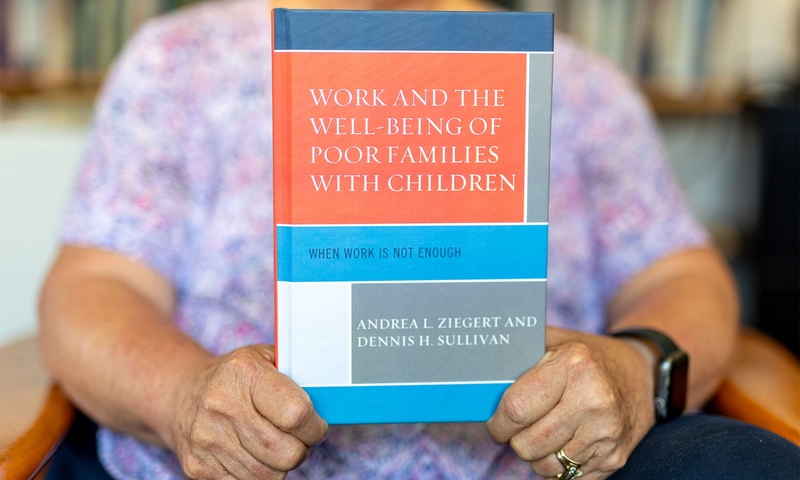Assistant Professor Sarah Supp operates at the intersection of two academic fields. Synthesizing data analytics and biology as a biodiversity researcher, Supp creates surprising new ways to research and solve problems. And she is a crusader in the classroom, supporting biology professors in adding the power of data analytic tools to their curriculum. The National Science Foundation (NSF) is funding her work in both of these initiatives.
“When you partner biology and data analysis, you gain a stronger understanding of general patterns and cause-and-effect relationships,” she says.
Supp accesses huge data sets to peer deeply into the past or widely across swaths of ocean and terrain, tracking biodiversity changes through time or across latitudes. “My goal is to understand similarities of patterns and trends writ large.”
Supp’s research questions both the macro and the (relatively) micro as she tracks alterations to our planet’s climate and biosphere.
On the macro side, she is part of an international team of researchers examining 50,000 longitudinal land and marine data series across the planet. The group has found trends that correlate changes in species abundance and diversity to changes in air or sea surface temperature. They have also tracked the different rates of changing biodiversity on land versus in the ocean, in relation to forest loss, and identified areas across the planet that are experiencing greater overlapping effects on climate change and human-driven pressures.
And on the micro side, Supp is tapping into citizen science observations to gain insight into how species migrate in parallel over time through a multi-institution collaborative NSF award. Tracking the Eastern Red Cedar, nicknamed “the green glacier” because of its steady encroachment of territory, she is exploring the role of birds in the trees’ westward creep across North America.
The undeniable benefits of this data analytics with biology partnership drive Supp to take on a third line of research: to find ways to help biology professors, especially at the undergraduate level, incorporate data analytics tools into their curriculum.
“It’s broadly understood that we need to update our biology undergraduates with modern problem-solving skills. And data science — quantitative reasoning — is something our graduates need to enter their careers,” she says.
While change is inherently challenging, updating the curriculum — especially intricately planned labs — raises the bar even further. Couple that with learning and putting into action a new field of science… well, let’s just say this is an uphill climb. But Supp is up for it.
Supp and fellow co-principals were awarded an NSF grant to form the Biological and Environmental Data Education (BEDE) Network, a community of biologists and data scientists “dedicated to empowering undergraduate instructors to bring data science into biology and environmental science curricula.”
It can be overwhelming to introduce new knowledge to an established science like biology, where there is already an abundance of information to teach and learn.
“We convened a mini-conference in 2019 at Denison and developed a survey to identify six main data skills,” Supp says. “We also identified a number of potential barriers — many of them were perceived barriers about knowledge and comfort. Even professors can have imposter syndrome or label themselves as ‘not a math person’ or ’not a data person’.”
The BEDE Network organized a training network for instructors, is collaboratively developing data literacy modules geared toward biology instructors, and plans to build shareable curriculum maps that suggest accessible incremental steps to including data science tools within undergraduate biology curriculum. These small changes can plant the seed for further growth.
Supp is hopeful. “The field of biology wants to embrace this education. We recognize this is the present and the future of biology, and we are able to do new and exciting things all the time.”
